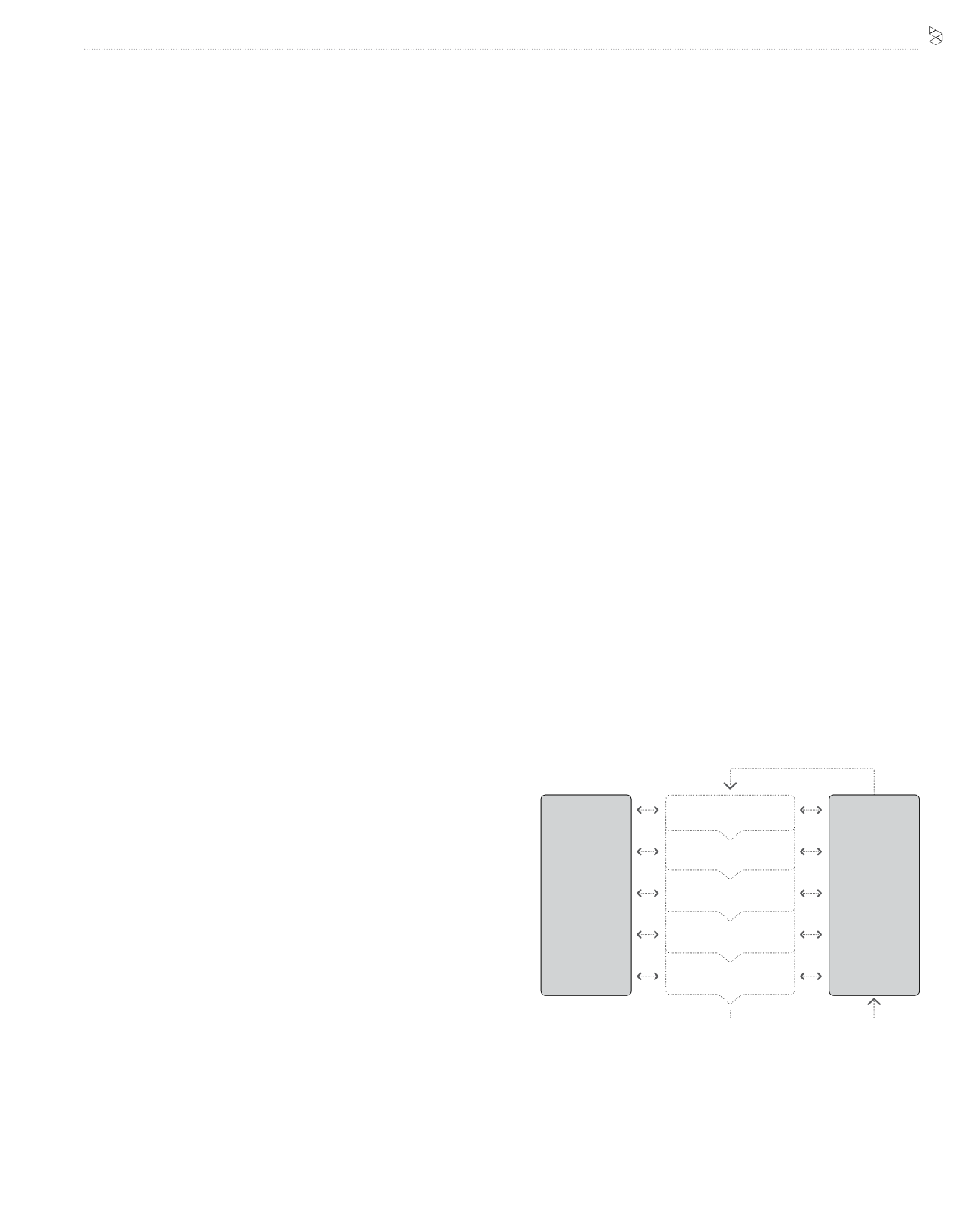

GOVERNANCE
Axiata Group Berhad | Annual Report 2016
099
Axiata’s LoA document clearly sets out the matters reserved
for the Board’s consideration and decision making, the
authority delegated to the President and GCEO and other
SLT members, including the limits to which the President
and GCEO can execute the authority, and provides guidance
on the division of responsibilities between the Board and
Management.
1.6 Commitment to Competency
•
Competency Framework
The Group appoints employees of the necessary
competencies to ensure that the personnel driving key
operations are sufficiently skilled and exert the required
qualities of professional integrity in their conduct.
•
Performance Management
The Group is committed to attract and retain competent,
dedicated and loyal employees. Programmes and initiatives
have been established to ensure that the Group’s human
capital is equipped with the qualities and skills to drive the
Group to become a world class company through ongoing
emphasis on performance management and employee
development.
The Group has in place a Key Performance Indicators (KPI)
performance measurement process as prescribed under
the Government-Linked Company Transformation (GLCT)
programme to link performance and compensation in order
to create a high performance work culture. This process
also seeks to provide clarity, transparency and consistency
in planning, reviewing, evaluating and aligning employees’
actions and behaviours to that of the Group’s vision and
mission.
•
Training and Development Framework
It is the Group’s policy to train employees at all levels so
that they would be able to perform well in their present jobs
and also to develop employees who are considered to have
the potential to perform duties with wider responsibilities
so that they may be ready to assume them when needed.
Programmes are also implemented to ensure that employees
receive continuous training in various areas of work such as
knowledge, health and safety, technical training, leadership
and new product development.
•
Talent Development and Succession Planning
There is a Group Talent Management Framework in place
to identify and develop a group talent pipeline within the
organisation as a supply for future leadership demands.
In this respect, the Group has met its target of identifying
C-suite potentials that provides a cover ratio of 2:1, from
within the organisation and has been intensifying its efforts
in making these talent ready to succeed the current top
management across the Group. This is done via structured
leadership development programmes, mentoring and
coaching, regular leadership readiness assessments, as well
as cross-functional and cross-country assignments.
This leadership talent pipeline is also regularly reviewed
via the Group Talent Council and assessed as potential
successors for key positions in the Group, via internal and
external benchmarks.
Succession plans and the robustness of the talent pipeline
are regularly reviewed by the Board. The talent pipeline
includes fresh graduates and middle management levels
so as to ensure a continuous supply of talent. As of 31
December 2016, eleven (11) internal successors have been
at placed top positions across the Group.
2.0 Risk Assessment
Axiata’s risk management process is guided and principally aligned to
ISO31000:2009 where risk is managed to ensure the achievement and
implementation of strategic objectives. The Group’s risk management
process typically involves identifying particular events or circumstances
relevant to our objectives and risk appetite, assessing them in terms of
likelihood and magnitude of impact, determining a response strategy,
evaluation of adequacy of existing controls, and monitoring the
implementation of the response. The objective is to protect and create
value for our key stakeholders.
Axiata’s Risk Assessment Process is depicted in the following diagram:
Process for Managing Risk
Establish Context
Communication
& Consultation
Recording,
Monitoring &
Review
Risk Identification
Risk Analysis
Risk Evaluation
Risk Treatment









